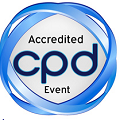Youngnim Choi
Seoul National University School of Dentistry, Korea
Title: Imbalances in the oral mucosal microbiota associated with oral mucosal diseases
Biography
Biography: Youngnim Choi
Abstract
Both recurrent aphthous stomatitis (RAS) and oral lichen planus (OLP) are common oral mucosal disorders with unknown
ediopathogenesis. Th e oral mucosal microbiota on the lesions of either RAS or OLP were characterized in comparison with
healthy microbiota of control subjects. Th ere were no signifi cant diff erences in the alpha diversity between the controls and
either the RAS or OLP groups, however, the mucosal microbiota of both diseases showed increased inter-subject variability
compared to controls. A comparison of the relative abundance of each taxon revealed decreasing state in the members of
healthy core microbiota but increasing number of rare species in RAS. Particularly, decreased Streptococcus salivarius and
increased Acinetobacter johnsonii were associated with RAS risk. A dysbiosis index, which was developed using the relative
abundance of A. johnsonii and S. salivarius and the regression coeffi cients, correctly predicted 83% of the total cases for the
absence or presence of RAS. Meanwhile, the mucosal microbiota of OLP were characterized as a decrease in Streptococcus and
increases in gingivitis/periodontitis-associated bacteria. Because bacteria were abundantly detected within the OLP tissues
throughout the epithelium and the lamina propria, the microbiota located within the mucosal biopsies of several OLP patients
were analyzed. Surprisingly, a few speices were highly enriched within the tissues, suggesting a potential pathogenic role in
OLP. Th e knowledge on altered mucosal microbiota may provide diagnostic tools and new therapeutic targets for, in addition
to insights into the pathogenesis of oral mucosal diseases.

